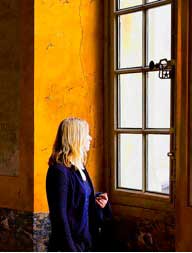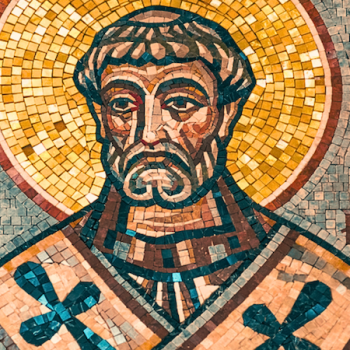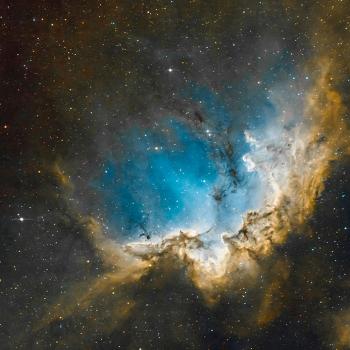By Jessica Coblentz
 Last week I was walking through Harvard Square when a smiling, middle-aged gentleman startled me with the question, "So this is what a feminist looks like?" After a momentary pause, I realized that he was referring to the big black letters on the side of the cloth bag I unthinkingly carried over my shoulder. The tote bag, which I purchased in support of my campus' feminist advocacy group in college, read, "This is what a feminist looks like," a popular slogan from Second Wave feminism. The man's wife and I proceeded to explain to him the purpose of this slogan: By putting a real face to "feminism," the stereotypes, misunderstandings, and prejudices about the feminist movement are shattered one person at a time. His wife suggested he wear a bag like mine sometime...
Last week I was walking through Harvard Square when a smiling, middle-aged gentleman startled me with the question, "So this is what a feminist looks like?" After a momentary pause, I realized that he was referring to the big black letters on the side of the cloth bag I unthinkingly carried over my shoulder. The tote bag, which I purchased in support of my campus' feminist advocacy group in college, read, "This is what a feminist looks like," a popular slogan from Second Wave feminism. The man's wife and I proceeded to explain to him the purpose of this slogan: By putting a real face to "feminism," the stereotypes, misunderstandings, and prejudices about the feminist movement are shattered one person at a time. His wife suggested he wear a bag like mine sometime...
"This is what a Catholic woman looks like." I wonder what kind of bewildered reactions I would get from a bag plastered with that slogan! As with feminists, it is so easy to take for granted the typical notions of "what a Catholic woman looks like." Listen to many of the "official" voices on Catholic identity today, and one will assume she is either married or celibate, free of artificial contraceptives, and of course, adamantly pro-life in the abortion debate. If she takes her faith seriously she is a regular Mass attendee and participant in the sacraments. She is proud to be feminine, wholly maternal, and unwaveringly compliant with our Church leaders.
If you know a young Catholic woman or two, however, you probably know that these popular perceptions cannot epitomize what Catholic women really look like today. Surely, there are some who proudly fit these more traditional perceptions - but neither their lives, nor that of any other essential female life, should be considered a prototype for young, female Catholic identity in our world.
How, then, can we reach a more accurate understanding of what a Catholic woman looks like today? It seems to me we must begin by examining our typically unquestioned presumptions about what Catholics look like today. One theologian, Professor Tom Beaudoin of Fordham University, is doing his part to complicate notions of religious identity and practice among Catholics by writing about a group of people who are typically excluded from the most noted perceptions of the tradition. He calls them "secular Catholics," and if we take their religious identities and practices seriously, it may provide challenging insight into the lives of many Catholic young women today.
According to Beaudoin's presentation at the National Pastoral Life Center's 25 year Anniversary Celebration in March 2009, secular Catholics are "those raised Catholic who cannot find Catholicism as their central life project." Now as adults, they may not attend Mass regularly, or at all. They may disagree with many of church tenets deemed essential by others. For them, Catholicism is "an irremediable aspect of their identity," yet because they deal with it outside the realm of traditional Catholic practices, secular Catholics are often dismissed as, "‘nonpracticing,' ‘religiously illiterate,' ‘relativistic,' ‘inactive,' or ‘fallen away.'"
Beaudoin's work challenges people to set aside the common assumption that Catholics practices and identity necessarily take place within traditional Catholic sacred settings. He suggests, instead, that secular Catholics work out understandings of the truth of their lives in a secular world of "many experiences, relationships, languages, cultures, histories," yet in a way that is not necessarily without one's sense of belonging to Catholicism.
We all live lives in the secular world, and Beaudoin suggests that our spiritualities reside there too. For secular Catholics, secular space is the primary space in which they engage the religious search for truth and meaning. These Catholics are simply "trying to live their secularity, which often includes their own sense of spirituality, with much more investment than their ecclesiality." The outward appearance of secularity should not necessary exclude the real existence and significance of a Catholic spirituality.
Not unlike the bold letters painted on my tote bag, Beaudoin challenges us to question our presumptions about what a Catholic woman looks like by legitimizing the secular practices and beliefs that might otherwise defy our traditional perceptions of Catholics. Some Catholics appear more "secular," while others, more "traditionally" religious: this is what Catholic women look like today.




